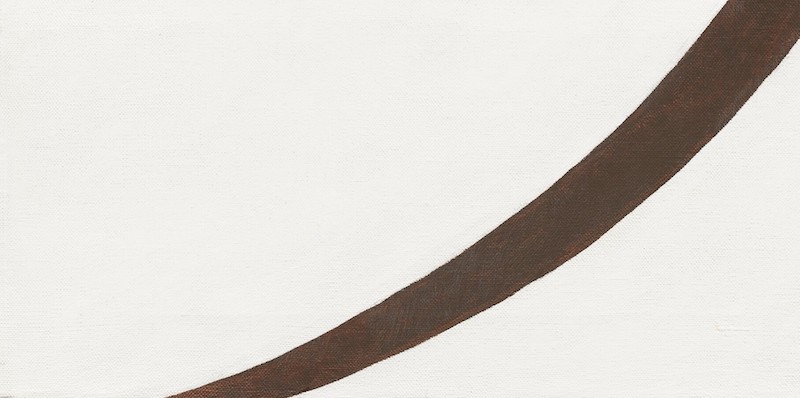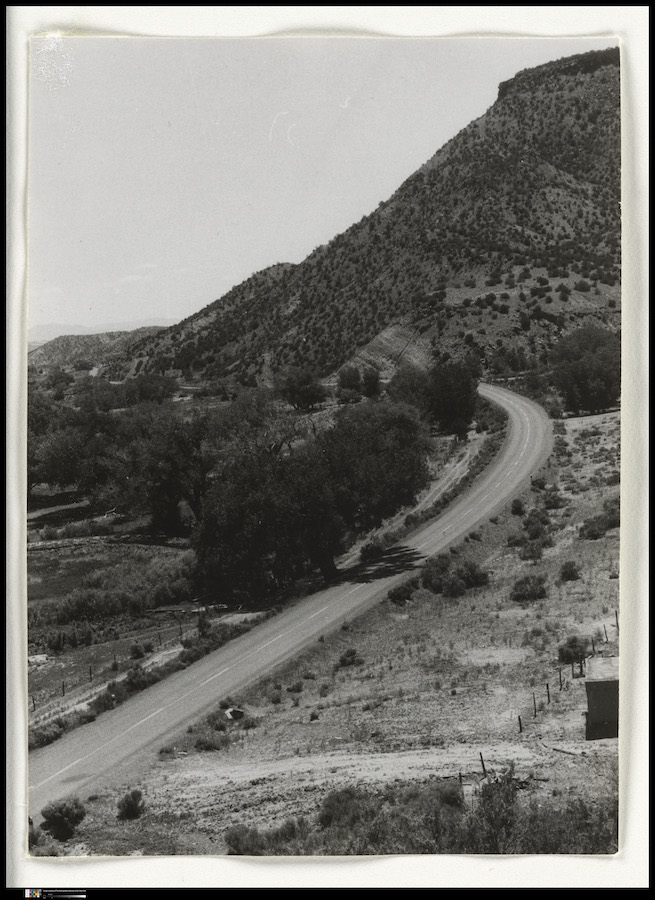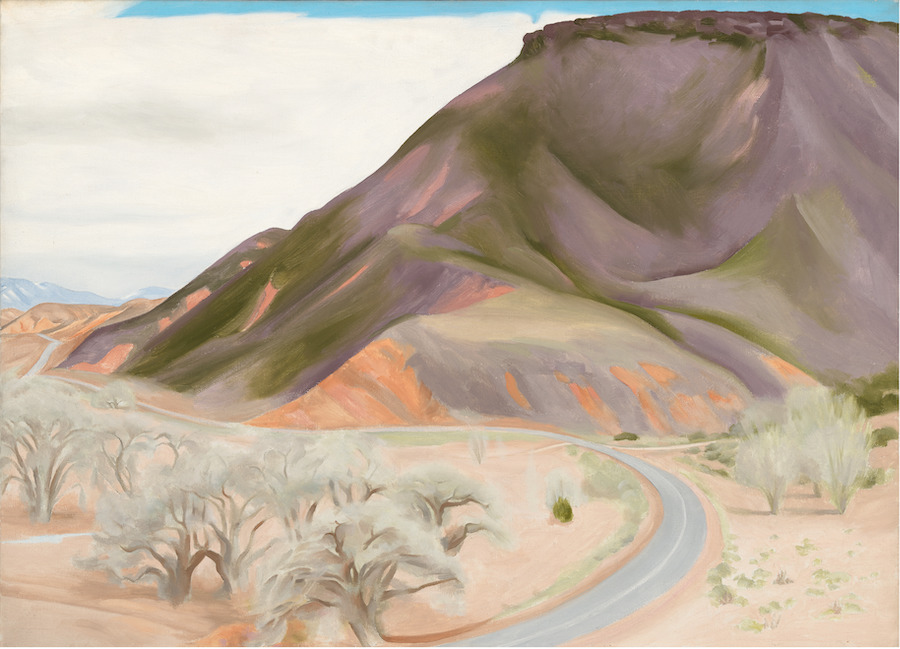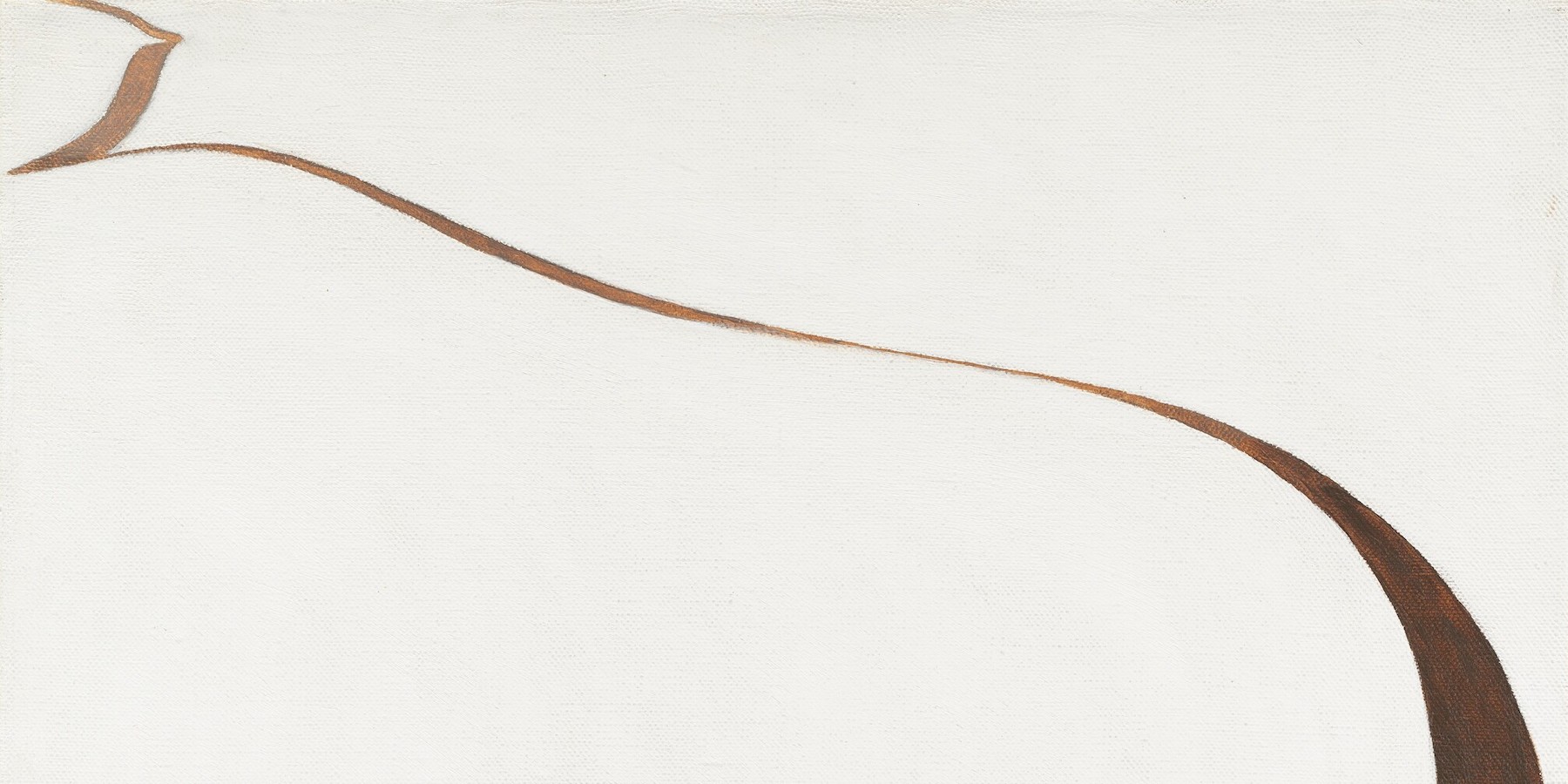Immerse yourself in the vastness of O’Keeffe’s minimal painting.
What does your life feel like right now? You might be riding the frantic energy of the season, alternately electrifying and tiring. Or perhaps you have found a grounded stillness and seek that calm in the world around you.
Wherever you’re coming from, you have landed here. We invite you to embrace the act of slow looking. Let the spare forms of Georgia O’Keeffe’s Winter Road I help you find a quiet moment.
Before we dive in, take a deep breath.
Let your eyes wander across the image.
Start at the top.
And work your way down slowly.

Georgia O'Keeffe, Winter Road I, 1963, oil on canvas, Gift of The Georgia O'Keeffe Foundation, 1995.4.1
Set aside your impulse to make meaning.
There will be time for that.
Simply take note of what is on the canvas.
What colors do you see?
How might you describe them?

O’Keeffe used a spare palette of only two colors: a creamy white and a deep warm brown.
The shades blend at the very top of the canvas. A brown brushstroke dropped into still-wet white paint made a milky chocolate hue.

Follow the line.
What do you notice?
The line undulates, like the inhale and exhale of a breath. It almost looks like calligraphy. The line swells as it curves, only to recede again.
What do you feel as your gaze wanders?
In the quiet of the winter white, you might find calm.
But the image may also create a sense of longing, a search for vast distances. The feeling of arriving and leaving.
In such a spare composition, it is a marvel that O’Keeffe manages to evoke the faraway. She had been trying to create this effect for nearly her entire career. In 1916 she wrote in a letter to her friend Anita Pollitzer,
I had an idea today. When we draw. . . we try to have rhythms running over the surface. [Why] don’t we try to make them feel as if they were coming and going to and from you—through the thickness of the paper?
So where was the artist coming and going?
O’Keeffe made Winter Road I in 1963. The painting was inspired by the view out of her bedroom window in Abiquiu, New Mexico. The road she saw was Highway 84, which stretched past her home and wound around a mesa toward Espanola and Santa Fe.

Georgia O’Keeffe, Looking from Bedroom at Abiquiu Towards Espanola, New Mexico, 1957–58. Gelatin silver print. The Metropolitan Museum of Art, Anonymous Gift, 1977 (1977.657.3). Image copyright © The Metropolitan Museum of Art.
The artist documented the vista many times, on camera and on canvas. “The road fascinates me with its ups and downs and finally its wide sweep as it speeds toward the wall of my hilltop to go past me,” she wrote.

Georgia O'Keeffe. Mesa and Road East, 1952. Oil on canvas, 26 1/16 x 36 inches. Georgia O'Keeffe Museum. Gift of The Georgia O'Keeffe Foundation. © Georgia O'Keeffe Museum. [2006.5.234]
Her renditions became more and more abstract. By the time O’Keeffe painted Winter Road I, she had distilled the scene into its very essence. In her autobiography, she wrote,
I had made two or three snaps of it with a camera. For one of them I turned the camera at a sharp angle to get all the road. It was accidental that I made the road seem to stand up in the air, but it amused me and I began drawing and painting it as a new shape. The trees and mesa beside it were unimportant for that painting—it was just the road.
That road connected the artist to the people and world beyond her home. She relied on it to travel to and from Abiquiu. But it was also simply a line.
The winding curves of O’Keeffe’s Winter Road I hold both. We can see the ambitions of abstract minimalism, but also the intimacy of a place that meant so much to her.
What things do you see so frequently that you could distill them to just a few strokes? What, at its essence, brings you home?
